Introducción
Bulldozers are essential machines in the construction and mining industries, renowned for their power and versatility. One critical factor that significantly impacts the performance and efficiency of a bulldozer is its weight. Understanding how bulldozer weight influences various aspects of its operation can help operators and managers make informed decisions about equipment selection and utilization. This comprehensive guide will delve into the various ways bulldozer weight affects performance and efficiency, providing valuable insights for maximizing productivity.
Understanding Bulldozer Weight

What is Bulldozer Weight?
Bulldozer weight refers to the total mass of the machine, including its frame, engine, tracks, blade, and any additional attachments. This weight can vary significantly depending on the model, manufacturer, and specific configuration of the bulldozer. Generally, bulldozers are categorized into different classes based on their weight, ranging from small, compact machines to large, heavy-duty models.
Components Contributing to Bulldozer Weight
Several key components contribute to the overall weight of a bulldozer:
- Motor: The size and type of the engine play a crucial role in determining the bulldozer’s weight. Larger engines typically weigh more but provide greater power and torque.
- Frame and Undercarriage: The structural integrity of the bulldozer, including its frame and undercarriage, adds substantial weight to the machine. These components are designed to withstand heavy loads and rough terrain.
- Tracks: The tracks or wheels of a bulldozer also contribute to its weight. Tracks are generally heavier than wheels and provide better traction and stability.
- Blade and Attachments: The type and size of the blade, along with any additional attachments such as rippers or winches, significantly influence the bulldozer’s weight.
Table: Comparison of Bulldozer Weights Across Different Models
| Bulldozer Model | Peso (toneladas) | Engine Power (HP) | Blade Capacity (cu yd) | Application |
|---|---|---|---|---|
| Small Bulldozer | 8 – 10 | 80 – 100 | 1.5 – 2.5 | Residential construction |
| Medium Bulldozer | 15 – 20 | 150 – 200 | 3 – 4.5 | Road building |
| Large Bulldozer | 30 – 50 | 300 – 400 | 5 – 7 | Mining and heavy-duty |
| Extra Large Bulldozer | 50+ | 400+ | 8+ | Large-scale earthmoving |
Performance Impacts of Bulldozer Weight
Traction and Stability
One of the most significant ways bulldozer weight affects performance is through its impact on traction and stability. Heavier bulldozers generally offer better traction due to the increased ground pressure exerted by their tracks. This enhanced traction is crucial for pushing heavy loads, navigating rough terrain, and maintaining stability on inclines.
- Enhanced Traction: Increased weight helps the bulldozer’s tracks grip the ground more effectively, reducing slippage and improving the machine’s ability to push and pull heavy materials.
- Improved Stability: A heavier bulldozer has a lower center of gravity, which enhances stability and reduces the risk of tipping over, especially when operating on uneven or sloped surfaces.
Eficiencia de combustible
While heavier bulldozers provide better traction and stability, they also tend to consume more fuel. The relationship between bulldozer weight and fuel efficiency is complex and depends on various factors, including engine efficiency, operational conditions, and the type of work being performed.
- Higher Fuel Consumption: Heavier machines require more power to operate, leading to increased fuel consumption. This can result in higher operational costs over time.
- Balancing Weight and Efficiency: Operators must balance the benefits of improved traction and stability with the increased fuel costs. In some cases, a slightly lighter machine may be more cost-effective for certain tasks without significantly compromising performance.
Maneuverability and Speed
The weight of a bulldozer also impacts its maneuverability and speed. Lighter bulldozers are generally more agile and can move faster than their heavier counterparts. This can be advantageous in situations where quick maneuvering is required, such as in residential construction or landscaping projects.
- Increased Agility: Lighter bulldozers can navigate tight spaces and make sharp turns more easily, enhancing their utility in confined areas.
- Reduced Speed: Heavier bulldozers may have slower travel speeds due to their increased mass, which can affect overall productivity in certain applications.
Load Capacity and Pushing Power
Heavier bulldozers typically have higher load capacities and greater pushing power, making them suitable for heavy-duty tasks such as mining, large-scale earthmoving, and demolition. The increased weight allows the machine to exert more force, enabling it to move larger volumes of material more efficiently.
- Higher Load Capacity: The additional weight supports larger blades and attachments, increasing the machine’s ability to handle substantial loads.
- Greater Pushing Power: Heavier bulldozers can push through dense materials and obstacles more effectively, enhancing their performance in demanding environments.
Efficiency Considerations of Bulldozer Weight

Job-Specific Requirements
Selecting the right bulldozer weight depends on the specific requirements of the job at hand. Different projects demand varying levels of power, stability, and maneuverability. Understanding these requirements helps in choosing a bulldozer that optimizes efficiency and productivity.
- Residential Construction: Lighter bulldozers are often preferred for residential construction due to their maneuverability and lower ground pressure, which minimizes damage to the surrounding area.
- Mining and Heavy-Duty Applications: Heavier bulldozers are better suited for mining and large-scale earthmoving projects where pushing power and stability are paramount.
Cost Implications
The weight of a bulldozer can have significant cost implications, both in terms of initial purchase price and ongoing operational expenses. Heavier machines generally cost more upfront and have higher fuel and maintenance costs. However, their enhanced performance can offset these expenses by increasing productivity and reducing project timelines.
- Initial Purchase Price: Heavier bulldozers with larger engines and more robust components typically have higher initial purchase prices.
- Operational Expenses: Increased fuel consumption and maintenance requirements can add to the overall operational costs of heavier bulldozers. Balancing these costs with the performance benefits is crucial for maximizing efficiency.
Impacto medioambiental
The environmental impact of bulldozer weight is an important consideration in modern construction and mining practices. Heavier bulldozers tend to produce more emissions due to higher fuel consumption, which can affect air quality and contribute to environmental degradation.
- Emission Control Technologies: Many modern bulldozers are equipped with advanced emission control technologies to mitigate the environmental impact of increased fuel consumption. These technologies help reduce greenhouse gas emissions and improve overall environmental performance.
- Sustainable Practices: Implementing sustainable practices, such as optimizing bulldozer usage and maintaining equipment properly, can help minimize the environmental impact of heavy machinery.
Conclusión
Understanding how excavadora weight affects performance and efficiency is essential for selecting the right equipment for various construction and mining projects. While heavier bulldozers offer enhanced traction, stability, and pushing power, they also come with higher fuel consumption and operational costs. Balancing these factors is crucial for maximizing productivity and achieving cost-effective operations.
By considering job-specific requirements, cost implications, and environmental impact, operators and managers can make informed decisions about bulldozer weight and optimize the performance and efficiency of their equipment. Whether for residential construction, road building, or large-scale mining, choosing the right bulldozer weight is key to ensuring successful project outcomes.
Preguntas Frecuentes
How does bulldozer weight impact fuel efficiency?
Bulldozer weight impacts fuel efficiency because heavier machines require more power to operate, leading to increased fuel consumption. This can result in higher operational costs, but the enhanced performance benefits of heavier bulldozers may offset these expenses.
What are the benefits of a heavier bulldozer?
The benefits of a heavier bulldozer include improved traction and stability, higher load capacity, and greater pushing power. These advantages make heavier bulldozers suitable for demanding tasks such as mining, large-scale earthmoving, and demolition.
How does bulldozer weight affect maneuverability?
Bulldozer weight affects maneuverability by influencing the machine’s agility and speed. Lighter bulldozers are generally more agile and can navigate tight spaces more easily, while heavier bulldozers may have slower travel speeds and reduced maneuverability.
What factors contribute to the overall weight of a bulldozer?
Several key components contribute to the overall weight of a bulldozer, including the engine, frame and undercarriage, tracks, blade, and any additional attachments. The specific configuration and model of the bulldozer also play a role in determining its weight.
How can I balance bulldozer weight and efficiency?
Balancing bulldozer weight and efficiency involves considering the specific requirements of the job, the cost implications, and the environmental impact. Selecting a bulldozer that meets the performance needs of the project while minimizing fuel consumption and operational costs is key to optimizing efficiency.
Are heavier bulldozers always better for construction projects?
Heavier bulldozers are not always better for every construction project. While they offer enhanced performance for heavy-duty tasks, lighter bulldozers may be more suitable for projects that require maneuverability and lower ground pressure, such as residential construction and landscaping.
What is the role of bulldozer weight in environmental sustainability?
Bulldozer weight plays a role in environmental sustainability because heavier machines tend to produce more emissions due to higher fuel consumption. Implementing emission control technologies and sustainable practices can help mitigate the environmental impact of heavy bulldozers.
How does bulldozer weight affect load capacity?
Bulldozer weight affects load
capacity because heavier machines can support larger blades and attachments, allowing them to handle more substantial loads. This increased capacity is beneficial for tasks that involve moving large volumes of material.
What should I consider when choosing a bulldozer weight for my project?
When choosing a bulldozer weight for your project, consider factors such as the specific requirements of the job, the type of terrain, the desired performance characteristics, and the cost implications. Balancing these factors will help you select the right bulldozer for optimal efficiency and productivity.
How can I improve the fuel efficiency of my bulldozer?
To improve the fuel efficiency of your bulldozer, ensure regular maintenance, use the appropriate operating techniques, and consider the use of emission control technologies. Properly maintaining the machine and optimizing its usage can help reduce fuel consumption and operational costs.


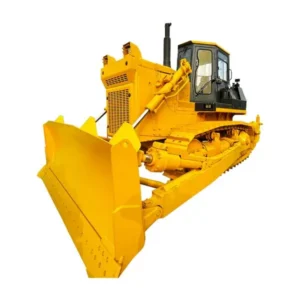
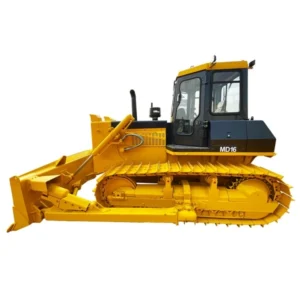
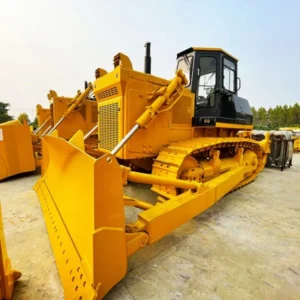
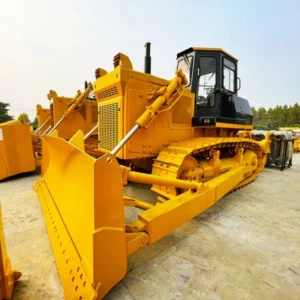
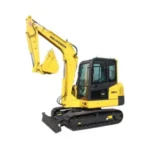

-150x150.webp)
